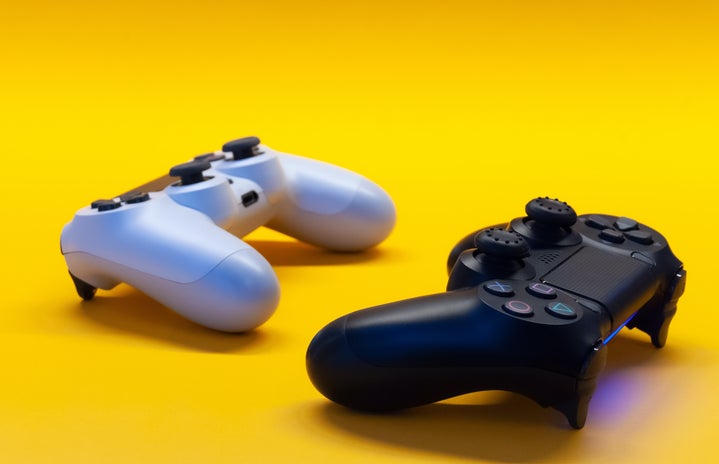The world of video games holds so many different worlds to escape to for a few hours, but why does it always feel like there is a giant wall between women and the gaming universe? I can remember begging my parents for my first PlayStation back in 2013. I was the only girl in my friend group to own a console leaving me in limbo between my girl friends not wanting to play because it was “for boys,” and my guy friends not allowing me into their teams and lobbies because “girls aren’t good enough to join.” Now sure, there are games labeled “for girls,” such as Animal Crossing and The Sims, but these labels are helping to create a divide in the community when there is no such thing as “boy games” and “girl games.” As a long-time video game fan, it’s time to investigate the current status of women in online gaming, streaming, and E-sports.
For a long time, women were not accepted into the world of competitive gaming and streaming, but in recent years there has been a rise in the number of female content creators, streamers, and E-sports players. The most popular game streaming platform is Twitch, and it is where many female creators have found their voice. By broadcasting games live to an audience, these streamers have found a way to form a community of strong women for younger girl gamers to look up to. When I was first getting started into console games, there weren’t any popular female streamers to look up to. These women are trailblazing a path for greater acceptance in the gaming community. One of my personal favorites is Pokimane. She is one of Twitch’s top streamers competing with male creators like Ninja. Not only is she a very successful entertainer and streamer, but her content includes playing competitive games that are known to be dominated by male players, such as Fortnite and League of Legends. With 8.4 million followers, she’s become a role model for many young girl gamers out there looking to make a splash in the male-dominated field.
E-sports is relatively newer in the history of video games and has become immensely popular among video game fans. Fighting to be the most skilled in their respective games, E-sports has brought an even more competitive culture to online gaming. Because of this competitive culture, gatekeeping tendencies have arisen, leading to most competitive teams not hosting female players. While there are a few women in the E-sports arena, such as players Scarlett (Sasha Hostyn) and Mystik (Katherine Gunn), their average earnings are lower than that of their male counterparts, and they are also not featured in large tournaments such as the Fortnite World Cup and League of Legends Worlds. Now, players do have to qualify for this competition, but when female players struggle to get team sponsorships to practice and play full time, male players that dominate team rosters are at an advantage. While E-sports in its current environment is not a fair playground for female and male gamers alike, the growth in popularity of this mode of gameplay, combined with more female gamers being featured in streaming channels, could lead to better and more open competition.
Looking at the state of gaming and the culture that surrounds it today, online gaming has become a host for the competition, leisure, and team bonding. Now that there is an increase in women becoming popular streamers and attempting to break into competitive E-sports, young girls out there can look up to and relate to other girl gamers. Looking back, I wish there was someone that could tell my younger self it was ok to play “boy games” because there is no such thing as “games for boys” and “games for girls.” I am glad that younger women that want to get into gaming and competitive gaming have people to relate to and participate with. We still have work to do in making the world of online gaming a more inclusive place, but we are headed in the right direction.


